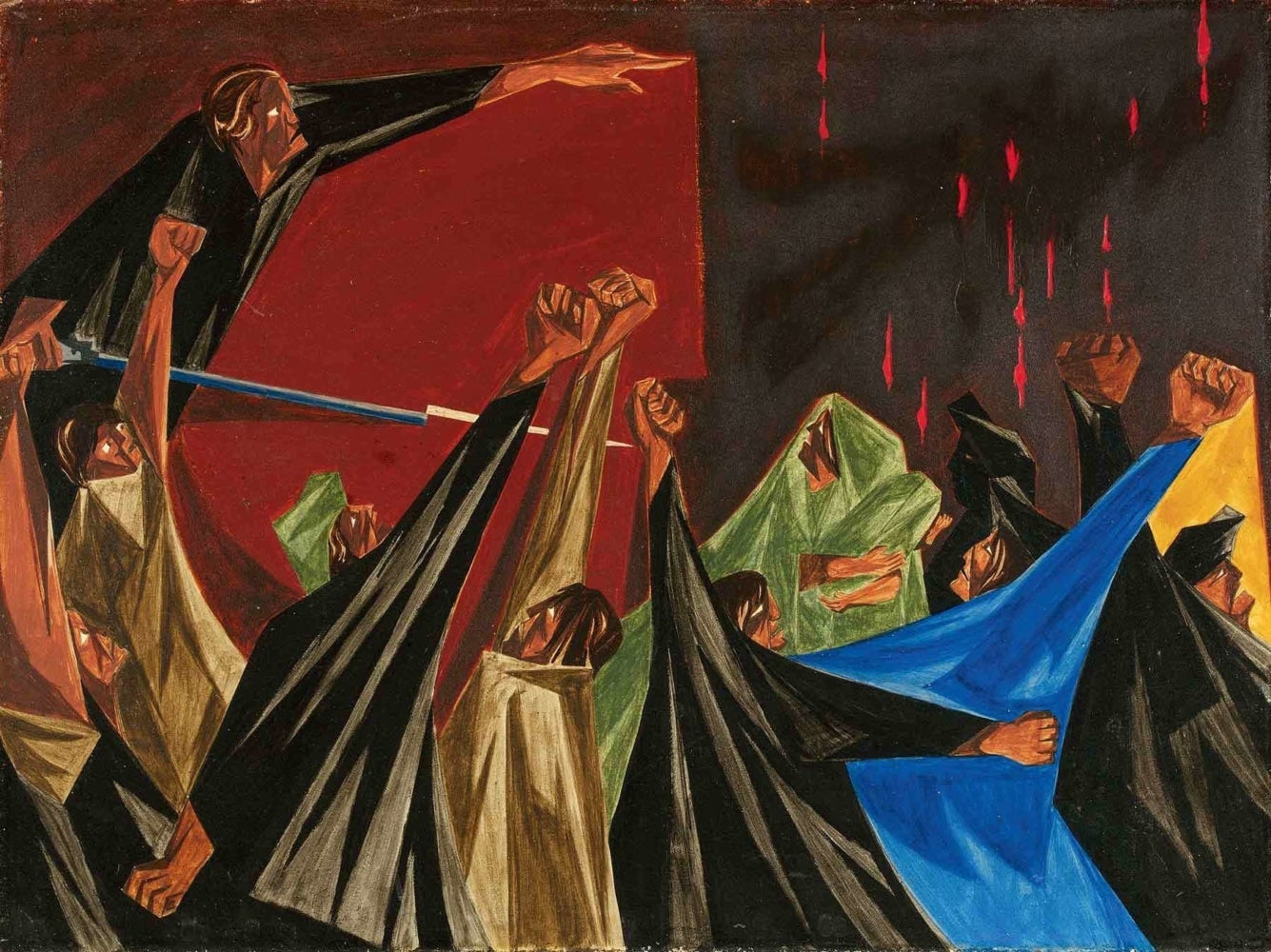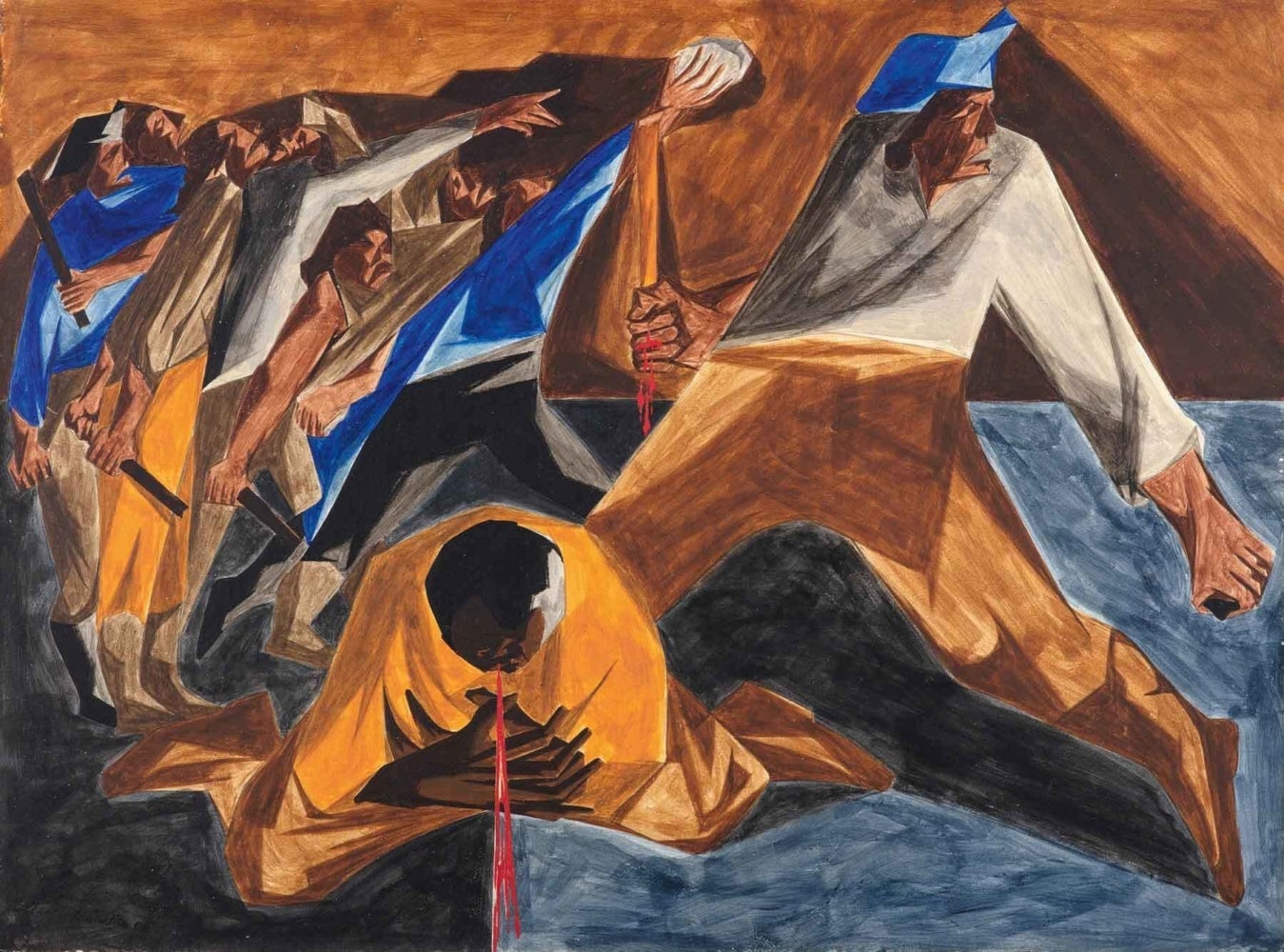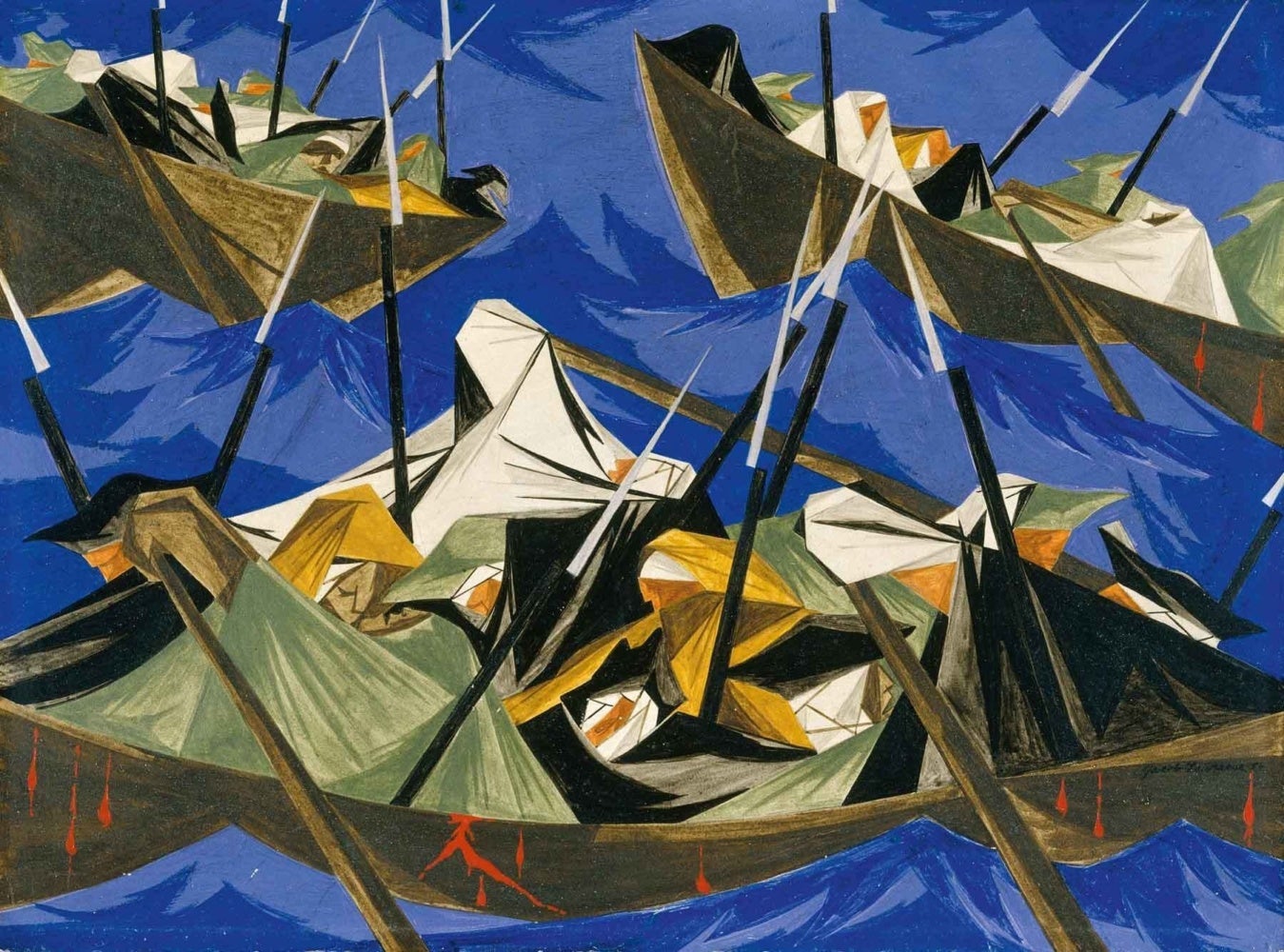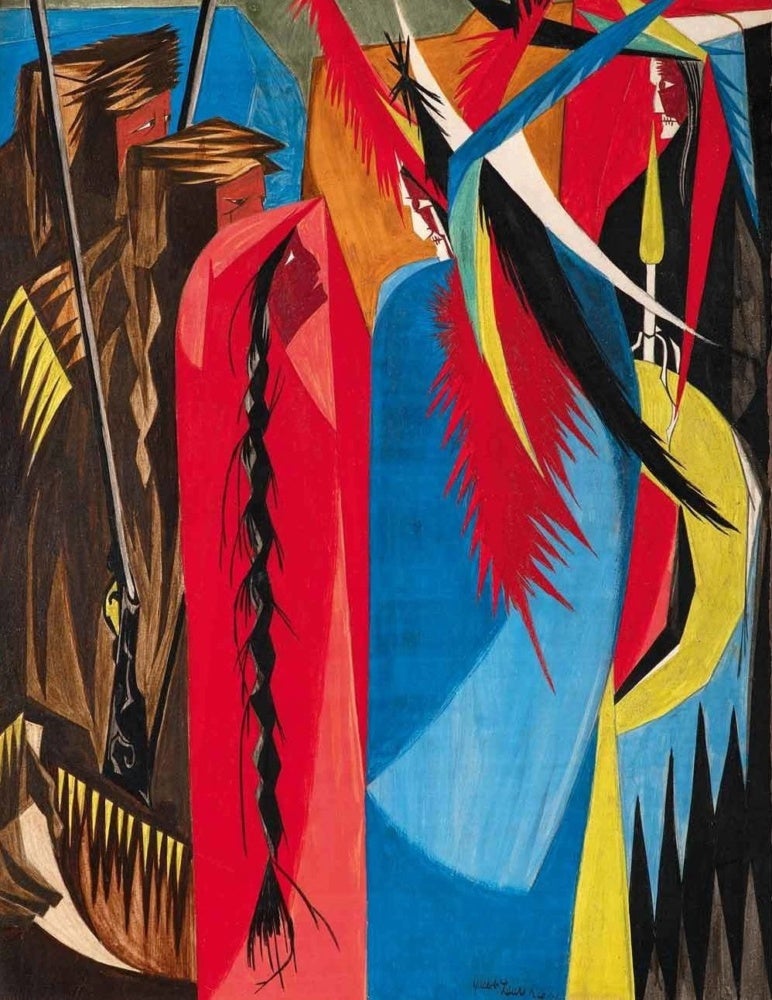
As you walk through the Birmingham Museum of Art’s maze-like hallway of galleries on your way to the third floor, you see enough images of myths about the world and the men who supposedly made it to fill a small history book. The paintings on the walls of the period galleries depict battles, kings, and the rise and fall of empires in the most dramatic, glorified ways––a type of history painting that obscures the bloodthirsty and racist overtones of war and campaigns of colonization. In the exhibition Jacob Lawrence: The American Struggle, however, the BMA shows a different type of history painting, bringing together works from Lawrence’s series Struggle: From the History of the American People. Together, the paintings are a vital retelling of American history that depicts our nation as still grappling with the racism, conflict, and struggle that has plagued us since our inception––doomed as a country to repeat this cycle until we confront our foundational sins.
Lawrence’s Struggle: From the History of the American People was created by the artist from 1954 to 1956, conceived during the same moment as historic civil rights events such as 1954’s landmark Brown v. Board of Education Supreme Court ruling. Known for historic series such as 1941’s The Migration Series, he began work for his series in the stacks of New York City’s 135th Street branch of the New York Public Library in the 1950s, now known as the Schomburg Center for Research in Black Culture. He poured over the archives to learn about America’s tumultuous decades from British colonization to the War of 1812, and Lawrence initially planned for the completed series to comprise sixty panels that framed American history through the otherwise unseen perspectives of enslaved people, working class colonists, and the American landscape itself––an unflinching and necessary look at the American conflict, reconciliation, and violence central to the country’s founding. A chilly public reception to an initial installment of the first thirty paintingsat the first exhibition of the Struggle series in 1985 caused Lawrence to abandon the project, and his dealer sold the panels to a private buyer instead of a public institution, leading to the gradual separation and disrepair of Struggle. Originally organized by curators at Massachusetts’ Peabody Essex Museum and previously at the Metropolitan Museum of Art, Jacob Lawrence: The American Struggle shows the twenty-five extant paintings of Lawrence’s series together for the first time since that 1958 exhibition, seeing America in a similar state of disarray and panic brought on by the long-festering wounds of anti-Black racism throughout this country’s culture and government.


The panels guide us through a tumultuous visual story of the United States’ first one-hundred years, highlighting images from the Revolutionary War, slavery, and westward expansion at the beginning of the nineteenth century. Instead of focusing on America’s so-called heroes and founding fathers, Lawrence choses a to feature the viewpoints of Black Americans and working class people, drawing attention to the anti-Black racism and colonial violence that touches all aspects of American life to this day. The second panel in the series, Massacre in Boston, shows the death of Crispus Attucks, a man who escaped enslavement and became the first American to die in the conflict leading up to the Revolutionary War. Attucks is at the front of the image, bent down and bleeding with his face obscured, giving a sense of anonymity––and constant relevance––to this image of violence on American land. Lawrence evokes imagery of battles and violence throughout the series, usually in stark contrast to the typical battle imagery we typically see that glorifies the atrocities of war and forgets the human costs of conflict. He offers his own interpretation of other battle scenes such as Emauel Leutze’s Washington Crossing the Delaware in “We crossed the River at McKonkey’s Ferry 9 miles above Trenton . . . the night was excessively severe . . . which the men bore without the least murmur . . .” —Tench Tilghman, 27 December 1776 (Panel 10), foregoing any of the heroics of war and supplanting them with unnamed, anxious troops huddled in their small boats. It’s a somber and important view of American history, one that holds the viewers and our country responsible for the cycles of violence we continue to perpetuate centuries later.

Made with egg tempera, the paintings are dynamic and expansive despite their somewhat diminutive size, and Lawrence’s vibrant use of color and line gives them a sense of breadth and movement. One of the panels regarding the United States’ westward expansion, In all your intercourse with the natives, treat them in the most friendly and conciliatory manner which their own conduct will admit . . . —Jefferson to Lewis & Clark, 1803 (Panel 18), is such a colorful and inventive work that from afar it almost reads as an abstract painting. Looking at these works fifty years after their inception, Lawrence’s works are shocking in their continued relevance, a sign of both this country’s continued violence and Lawrence’s skills as a storyteller. Panel 24, or Of the Senate House, the President’s Palace, the barracks, the dockyard . . . nothing could be seen except heaps of smoking ruins . . . —a British officer at Washington, 1814, depicts the August 1814 Burning of Washington, in which British troops raided the capital city and burned The White House and U.S. Capitol. Composed in muted earth tones, the painting is a still-life of blasting cannons against a decrepit wall. It was chilling, naturally, to see this panel a week after the insurrection of the U.S. Capital by a sitting president and his white-supremacist cronies. I compare the chaotic, colorful photographs of that day to Lawrence’s painting––one reveling in the terror of the scene and one solemnly understanding that this violence continues until America understands the rot and anger within itself. The genius of Lawrence’s painting is that it both transports the viewer to that historic moment and the now, allowing for a simultaneous reflection and a call for action.
As much now as ever before, Lawrence’s works are essential in their retelling and reframing of American history that understands the cyclical violence at its center. His Struggle series is fundamentally different from the myths of other American history paintings that justify and transfigure the dark heart of the nation. Instead, Lawrence’s scenes of struggle presents America as an experiment that must continue its struggle against itself––against its pain, its racism, and its penchant for self-mythologizing that keeps it entrenched in the past.
Organized by the Peabody Essex Museum in Salem, Massachusetts, Jacob Lawrence: The American Struggle is on view at the Birmingham Museum of Art in Birmingham, Alabama, through February 7, 2021.




